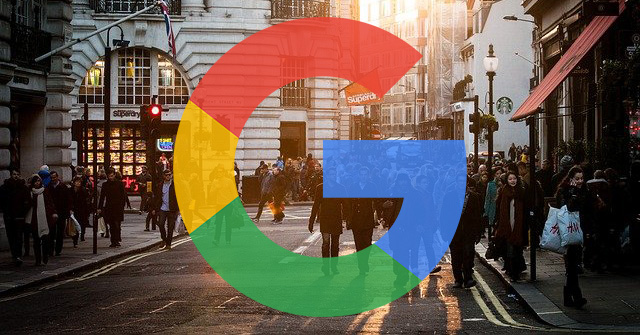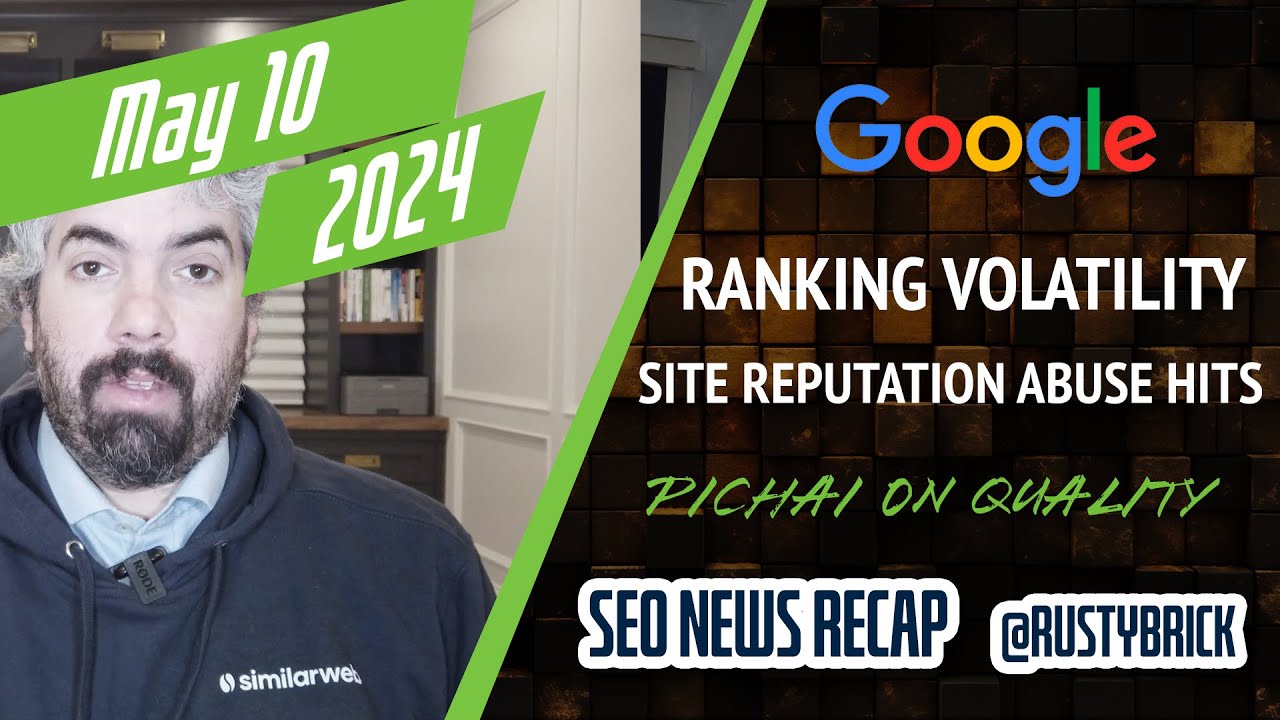SEARCHENGINES
Google Ads Improves Location Targeting Options

Google Ads seems to have added new location targeting options for your campaigns that let you better control who is seeing your search ads in Google. The options let you set who sees the ads and who is excluded from the ads.
The target options now include:
- Presence or interest: People in, regularly in, or who’ve shown interest in your target locations
- Presence: People in or regularly in your targeted location.
The exclusion options now include:
- Presence: People in your excluded locations
- Presence or interests: People in, regularly in, or who’ve shown interest in your excluded locations
Kasim Aslam shared a screenshot on Twitter, which I embedded below, and said “A gift from the Google Gods!! Y’all, this is a big, big deal. I’m hopeful it’ll help crack down on all of the junk traffic we’re seeing in lead gen accounts specifically. Fingers crossed!”
Nicole at Search Engine Land has a confirmation from Google, she wrote ““In campaign settings under “Location options,” advertisers will now find the ability to target based on physical “Presence” or “Presence or interest”. For Performance Max campaigns for online sales with a product feed, we’ll also be adding advanced location exclusions for “Presence” or “Presence or interest” similar to what is available in Smart Shopping campaigns today,” a Google representative told us.
New for Performance Max > With advanced location targeting controls you can target based on physical “Presence” or “Presence or interest”.
And if you’re using a product feed, you can exclude by “Presence” or “Presence or interest,” similar to Smart Shopping.
➡️More to come soon! https://t.co/oErceRPb6H— AdsLiaison (@adsliaison) July 7, 2022
A lot of search marketers are super happy about these location targeting settings.
Forum discussion at Twitter.
Source: www.seroundtable.com
SEARCHENGINES
Mikhail Parakhin Confirms He Is No Longer Working On Copilot At Microsoft

Mikhail Parakhin, the former head of Bing Search and Microsoft Advertising at Microsoft, confirmed he is no longer working on the Copilot project. He stepped down as the head of Bing Search and Microsoft Advertising weeks ago after Microsoft hired Mustafa Suleyman as the CEO of AI at Microsoft.
We knew Mikhail Parakhin was planning to work on something new but now Mikhail Parakhin confirmed that he is no longer working on Copilot.
He said on X, “Not working on Copilot anymore, onto new things.”
I did follow up and asked if “onto new things” means new things within Microsoft or new things at a new company but I did not hear back on that. His LinkedIn profile still shows he is at Microsoft.
Here are those posts:
I know, those were the best 🙂
— Mikhail Parakhin (@MParakhin) May 9, 2024
Not working on Copilot anymore, onto new things.
— Mikhail Parakhin (@MParakhin) May 9, 2024
I am super interested in what Mikhail is working on now and I suspect he will tell us soon.
I deeply miss his transparent and frequent posts about what Microsoft is working on with Copilot and Bing Search…
Forum discussion at X.
SEARCHENGINES
Daily Search Forum Recap: May 10, 2024
Here is a recap of what happened in the search forums today, through the eyes of the Search Engine Roundtable and other search forums on the web.
Google says site reputation abuse is not about links, it is about content. Google Local Service Ads ranking removed proximity as a ranking signal. Google Shopping may soon tell searchers how many shoppers purchased at your e-commerce site. Google Local panels now can show the owner of the business. Mikhail Parakhin from Microsoft confirmed he is no longer working on Copilot. Plus, I posted the weekly SEO video recap.
Search Engine Roundtable Stories:
-
Google: Site Reputation Abuse Isn’t About Linking
Danny Sullivan, Google’s Search Liaison, made it crystal clear that the site reputation abuse policy has zero to do with linking. This means that who you link to and/or who links to you has no impact on this new policy that Google began enforcing with manual actions earlier this week. -
Google May Show How Many Shoppers Purchased On Your E-Commerce Site
Google has sent some Google Merchant Center e-commerce site managers notifications that a new annotation may begin to show up in the search results next to their site’s listing that shows how many searchers purchased on your site. It may read, “1K shopped here recently.” -
Google: Proximity Not A Relevancy Factor For Local Service Ads
Google has updated its Local Services Ads help document on ad rankings to remove the line around “proximity to potential customers’ locations” is a ranking factor for those ads. Ginny Marvin, the Google Ads Liaison, said the document was updated but there was no recent or “sudden change to ranking considerations” to LSA rankings or positions. -
Google Local Panel With Owner Attribute
Google can show the owner of the business in the local panels in the Google search results. I suspect this is not new but I don’t believe I’ve seen this before, where Google will add an “owner” attribute to the local panel. -
Mikhail Parakhin No Longer Working On Copilot At Microsoft
Mikhail Parakhin, the former head of Bing Search and Microsoft Advertising at Microsoft, confirmed he is no longer working on the Copilot project. He stepped down as the head of Bing Search and Microsoft Advertising weeks ago after Microsoft hired Mustafa Suleyman as the CEO of AI at Microsoft. -
Google Ads Cyclone Money Machine
I found this photo funny. It is one of those cyclone money machines that money flies around in, and a person inside is supposed to try to grab as much money as possible. Well, there is a Google Ads logo on this one. Oh, the irony of this photo… -
Search News Buzz Video Recap: Google Search Ranking Volatility, Site Reputation Abuse Enforcement, Pichai On Search Quality, HCU Recovery & More
Google may have had two search ranking algorithm updates, one around May 9th and one around May 3rd. Google began its site reputation abuse policy enforcement this week with manual actions, and it is not about linking. Google said sites may recover from the helpful content update. Sundar Pichai, Google’s CEO, responded…
Other Great Search Threads:
Search Engine Land Stories:
Other Great Search Stories:
Analytics
Industry & Business
Links & Content Marketing
Local & Maps
Mobile & Voice
SEO
PPC
Search Features
Other Search
Feedback:
Have feedback on this daily recap; let me know on Twitter @rustybrick or @seroundtable, on Threads, Mastodon and Bluesky and you can follow us on Facebook and on Google News and make sure to subscribe to the YouTube channel, Apple Podcasts, Spotify, Google Podcasts or just contact us the old fashion way.
SEARCHENGINES
Google Search Ranking Volatility, Site Reputation Abuse Enforcement, Pichai On Search Quality, HCU Recovery & More

For the original iTunes version, click here.
Google may have had two search ranking algorithm updates, one around May 9th and one around May 3rd. Google began its site reputation abuse policy enforcement this week with manual actions, and it is not about linking. Google said sites may recover from the helpful content update. Sundar Pichai, Google’s CEO, responded to search quality issues in an interview. Google is now hiding the number of search results under the tools menu. Google will remove the disavow link tool at some point. Gemini stopped linking to sources. Google renamed AI Answers back to AI Overview. Google is testing a new Notes button in Search. Google SGE said you should drink urine to pass a kidney stone. Google has product review summary labels. Google may show searchers how many people purchased on your e-commerce site. Google Ads new Performance Max for marketplaces. Rumors of 25% of Google Ads accounts being audited are false. Bing is testing clearer distinctions between free and paid search results. Google LSAs ranking help document removed that proximity is used for ranking. Google Local Business Profiles is testing a new review listing. Google Search is testing showing only local results for near me queries. Google Analytics gained Google Ads conversion performance beta reporting. Statcounter said Google didn’t lose market share, it was a bug in the reporting. That was the search news this week at the Search Engine Roundtable.
Sponsored by Similarweb, the all-in-one- strategic SEO software. Get clarity of the SEO landscape through competitor analysis, keyword research, rank tracking, SERP insights and more. With industry-leading traffic and keyword data, based on real user journeys, Similarweb gives SEO professionals the whole picture so they can strategize smartly and drive sustainable business growth.
Make sure to subscribe to our video feed or subscribe directly on iTunes, Apple Podcasts, Spotify, Google Podcasts or your favorite podcast player to be notified of these updates and download the video in the background. Here is the YouTube version of the feed:
Search Topics of Discussion:
Please do subscribe on YouTube or subscribe via iTunes or on your favorite RSS reader. Don’t forget to comment below with the right answer and good luck!
-

 PPC5 days ago
PPC5 days agoHow the TikTok Algorithm Works in 2024 (+9 Ways to Go Viral)
-

 MARKETING7 days ago
MARKETING7 days agoA Recap of Everything Marketers & Advertisers Need to Know
-

 SEO4 days ago
SEO4 days agoHow to Use Keywords for SEO: The Complete Beginner’s Guide
-

 SEO6 days ago
SEO6 days agoBlog Post Checklist: Check All Prior to Hitting “Publish”
-

 MARKETING5 days ago
MARKETING5 days agoHow To Protect Your People and Brand
-

 SEARCHENGINES6 days ago
SEARCHENGINES6 days agoGoogle Started Enforcing The Site Reputation Abuse Policy
-

 PPC6 days ago
PPC6 days agoHow to Craft Compelling Google Ads for eCommerce
-

 MARKETING6 days ago
MARKETING6 days agoElevating Women in SEO for a More Inclusive Industry















You must be logged in to post a comment Login